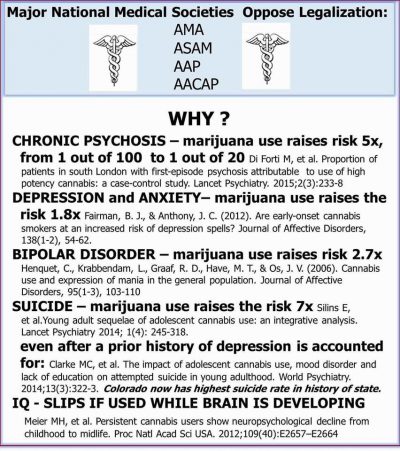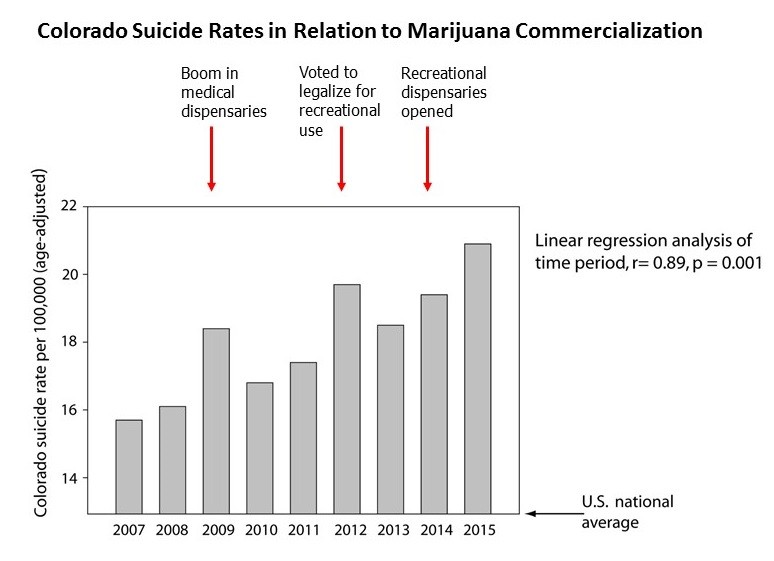(Please see Part 1: Marijuana Suicide, a Growing Risk for our Youth)
Marijuana-related suicide is a controversial topic because other websites include commenters who claim marijuana saved their lives. Pot interferes with the reward center of the brain, just like cocaine, alcohol and heroin. So when someone dependent on the drug doesn’t have it, their depression or anxiety becomes stronger than previously. After prolonged use, the brain eventually doesn’t function as well.
For this reason, it’s much wiser to rely on yoga, counseling, walking, and other exercise for depression and anxiety. (Others will say that anti-depressants are safer, although we won’t actually endorse them, and don’t think they’re always necessary.)

Marijuana increases the risk for psychosis more than any other drug. Marijuana is not the panacea the pot industry wants you to believe.
What Conditions Increase Suicide Risk?
Daily marijuana use below age 18 is connected to 7x the risk of attempted suicide before age 30.
In today’s world, students have huge problems and challenges even if they don’t abuse substances. Marijuana is the most likely drug of abuse for teens. Any substance abuse –marijuana, alcohol, opiates, other drugs or a combination – generally makes the depression more difficult to overcome.
The town of Pueblo, Colorado has had an alarming trend of suicides among its teens, at least five this year. Although local officials link these deaths to bullying, Pueblo is infiltrated with marijuana and other drugs. Dr. Steven Simerville, head of pediatrics at a Pueblo hospital, has spoken about the connection between marijuana and teen suicide. In October, 2016, he said that all but one of teens who attempted suicide had THC in their toxicology reports.
A few years ago studies showed that 28% of all high school students are depressed. There are plenty of reasons for teens to be depressed in this society: hormonal change, social pressure, relationships and academics. The social media adds a layer of complication to the problem with cyber bullying. When a teen becomes an adult, additional challenges emerge, and for some, entry into adulthood is jolting.
Family relationships and community connection are important. With support systems, many youth go through the rough patches and come out stronger. It’s a reason that government needs to protect our youth, educate against marijuana and stop legalization.

Suicide is Increasing Above National Rate in Colorado
The opposite is occurring in Colorado. Suicide rates in Colorado have reached all-time highs, according to a recent report by the Colorado Health Institute. Each one of Colorado’s 21 health regions had a suicide rate higher than the national average.
Those old enough to go into dispensaries can see how the pot industry advertises marijuana to treat depression or anxiety. Dispensaries prey on the vulnerable. For veterans and those without a job, it’s hard to resist.
When the pot industry tells us that “no one ever died from marijuana,” they’re being dishonest. There’s a popular strain of marijuana called Purple Suicide. There’s also a line of vape pens called Suicide Girls, specifically marketed for using honey/hash oil. Makers of the vape pens and marketers of Purple Suicide are onto something: marijuana use increases the suicide risk.
When they assert the numbers of those who die from alcohol each year, please ask who is tracking deaths from marijuana. Maybe it is time for the CDC to start tracking marijuana-related deaths. Please read Part 3, The Common Element.

